How to Keep Food Fresher, Longer
By Alexandra Sifferlin
According to a 2015 report, American households toss out around $640 worth of food each year. A lot of that might be due to preventable spoiling—if you don’t store your food right, it simply won’t last as long as it could. But since food waste contributes to already overstuffed landfills (all while wasting your own pretty pennies), we asked Jo Robinson, a food expert and the author of Eating on the Wild Side, for tips on keeping your food fresh for longer.
Onions

If you want onions to last for more than two weeks, put them in a paper bag and store them in a cool, dark space outside the fridge. Consider an unheated garage, as long as it’s above freezing.
Cheese

Soft cheese should be eaten soon, but with hard cheese, take it out of whatever wrapping it came in, then wrap it in parchment paper and tinfoil. This keeps it moist and fresh much longer; a hunk of parmesan can last months if stored correctly. Usually, eating moldy food is ill advised, but with hard cheeses like parmesan and cheddar, the safest way to get rid of mold is to cut away an inch of cheese around the moldy spot—then dig in.
Berries
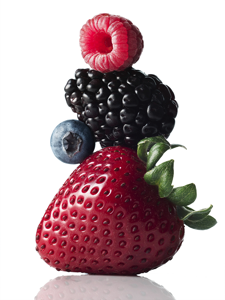
Berries should be eaten right away for the most freshness and nutrients, but washing berries in a vinegar-and-water mix (about one cup vinegar to three cups water) can extend their shelf life by a couple of days.
Herbs

There are few things more frustrating to a home cook than having to buy an entire pack of fresh herbs when all you need is a sprig or two. That’s because the rest invariably ends up in the trash. To keep herbs for longer, treat them like flowers. Make sure herbs are dry, trim off the stems, put them in a glass of water, and cover the top of the herbs with a baggie or a paper towel. Store them in the fridge.
Apples
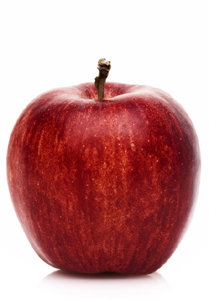
These fruits will last 10 times as long if they are kept in the coolest part of the fridge in high humidity—usually the bottom drawer.
Tomatoes

Store them out of the fridge—they lose their flavor in the cold. Just keep them out of direct sunlight and be sure to eat them within a couple of days.
Potatoes
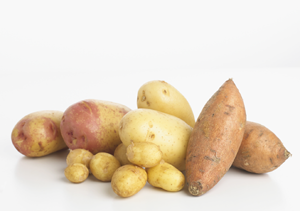
Spuds don’t need to be stored in the fridge, and don’t be worried about little sprouts that may grow. Just rub them off; the potatoes will likely taste sweeter.
Lettuce
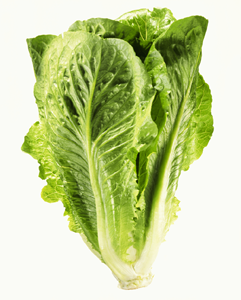
Plunge your greens into cold water as soon as you get them home, since heat is what spurs spoiling. Spin them dry so that leftover water doesn’t develop rot. Put the dried greens into an airtight zip-top bag. Take a pin or needle and punch about 10 holes on either side. This helps greens last up to four times as long as usual.
Eggs

Did you know raw eggs in the shell last up to five weeks in the fridge? Just don’t put them on the refrigerator door. Keep them in the back, where it’s cooler, and store them in the container they came in.
Grapes

Pay attention to the color of the stem. Fresh grapes have bright green, flexible stems. If grapes at the store have brown, brittle stems, it means they are going to spoil rapidly and not taste as good.
Dairy and Milk
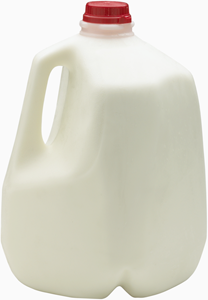
Consider bringing a cooler or an insulated bag with you to the grocery store. Exposing dairy products to heat for even a short amount of time will shorten their shelf life.
Meat
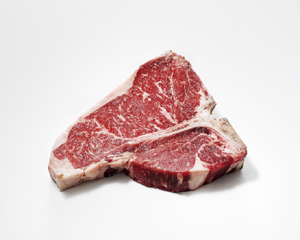
Keep meat in the bottom drawer of the refrigerator, and be sure to double-wrap it if it’s near produce.
BONUS TIP!
People often think food is unsafe if the “use by” or “sell by” date on the label has already passed. These dates are not indicators that the food will make you sick, however, only that they are no longer considered fresh by the manufacturer. Eating refrigerated food past its prime may not taste as good as eating it fresh, but in most cases it’s not going to harm you.
 Coconut Oil
Coconut Oil

How to eat it
If you pop your popcorn on the stove (and if you don’t, you should—it’s fast and fun), use a little coconut oil instead of other oil to add fat to your snack.
Why it’s good for you
Despite being high in saturated fat, coconut oil may be good for your heart, weight and energy levels. Coconut oil is composed of medium-chain triglycerides (MCTs), which are easily digested and have been shown to help the body burn fat and increase “good” cholesterol levels. More than 50% of coconut oil consists of lauric acid, and while lauric acid increases bad cholesterol, it raises your good cholesterol that much more. Some studies suggest improved exercise performance related to MCT consumption, but the data is not yet convincing.
Nutrition
A dab will do you—one tablespoon has nearly 14 grams of fat.
 Coffee
Coffee

How to drink it
Brew yourself a cup in the morning and drink it as plain as possible—the health benefits come from the coffee, not the cream and sugar you add to it.
Why it’s good for you
There’s been back and forth on how much is too much when it comes to coffee, but one study of 130,000 adults found no evidence that coffee increases the risk for health problems like heart disease or cancer, even among people who drank 48 ounces a day. The fact is, coffee is a complex drink containing hundreds of different compounds. Those include antioxidants that have been linked to a lower risk for Type 2 diabetes, Alzheimer’s and liver cancer. Keep in mind, that’s without added sugar and cream. Most experts say that up to four cups a day isn’t just OK—it’s healthy.
Nutrition
Coffee is Americans’ top source of antioxidants, which are thought to help fight disease.
 Collard Greens
Collard Greens

How to eat them
Remove the stems, which can be rough, and wash before cooking. Then try sautéing collard greens with a little olive oil, salt, pepper and garlic. Lots and lots of garlic.
Why they’re good for you
A sister to broccoli and brussels sprouts, collards are considered a cruciferous vegetable. Cooked collards are effective at lowering cholesterol—more so than even kale—as well as fighting cancer. Just half a cup of collard greens contains two days’ worth of vitamin A, essential for healthy vision, teeth and skin.
Nutrition
All leafy greens are nutritious, but collards are especially so.
 Corn
Corn
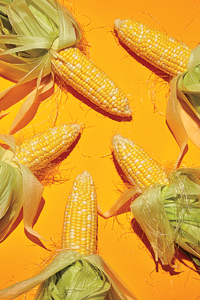
How to eat it
Grilled corn with a little salt and a small amount of butter is good any time of year. Of course, getting it fresh—typically that’s in the late summer or early fall—is when corn is the tastiest. The longer it’s held in storage, the less sweet it becomes.
Why it’s good for you
There may be no vegetable more evocative of summer than corn, though there are certainly reasons to eat it year-round. One ear of corn has approximately the same number of calories as an apple, with equally high nutrient levels. Non-genetically-modified corn is also loaded with lutein and zeaxanthin, two phytochemicals that promote healthy vision.
Nutrition
An ear of corn offers 3 grams of filling fiber.
 Cumin
Cumin

How to eat it
Try a homemade chili with cumin for seasoning. Include other spices like ground pepper and chili powder, as well as the usual suspects: ground meat, onion, tomato paste and beans. It’s also good sprinkled into Greek yogurt as a dip or onto roast vegetables.
Why it’s good for you
Cumin may be a common kitchen spice, but its health benefits are more than ordinary. Ground cumin may support heart health, fight infection and combat inflammation; just half a teaspoon of cumin has twice as many antioxidants as a carrot.
Nutrition
Cumin contains anti-inflammatory compounds that are thought to fight disease.
 Dandelion Greens
Dandelion Greens

How to eat them
Add them to salads or an egg sandwich in the morning. You can also stew them into stock for a delicious soup base. An easy way to cook dandelion greens is to substitute them for spinach on the stove. Cook on medium high while they wilt, and add seasoning of your choice (such as garlic).
Why they’re good for you
Bitter greens, like dandelion, are rich in vitamin C as well as B vitamins, calcium, iron and potassium. That’s an ideal mix for healthy bones and muscles.
Nutrition
They’re a great source of vitamin K, which is important for bone health.
 Eggplant
Eggplant

How to eat it
This vegetable, kin to the tomato and bell pepper, is an excellent substitute for meat in almost any dish. It has the right amount of toughness and can be eaten on its own or added to a pasta dish like lasagna or some orzo with feta cheese and tomatoes.
Why it’s good for you
Purple foods may be a powerful weapon in fighting heart disease, since they’re a rich source of phytonutrients—naturally occurring plant chemicals that are thought to have disease-preventing capabilities.
Nutrition
Eggplant is a decent source of fiber and is extremely low in carbohydrates.
 Eggs
Eggs
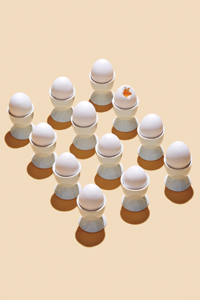
How to eat them
Eggs, whether they’re fried, poached or scrambled, are delicious any time of day. No matter how you eat them, they’re always better with hot sauce.
Why they’re good for you
Eggs deliver essential vitamins and minerals in a very small package. Plus, they’re a low-calorie, low-fat source of extremely digestible protein. The egg yolk in particular is a source of choline, important for proper cell and nerve function. Because cholesterol in the diet does not appear to have an impact on cholesterol in the blood, they’re not a food to skimp on—yolks and all.
Nutrition
They’re an excellent non-meat source of protein, and they’re low-calorie to boot.
 Endive
Endive

How to eat it
Often used raw in salads or appetizers, cooked endive can taste sweet and nutty. Endive tastes great when combined with a couple of other items on our list, like apples and fennel. Chop them up together with some feta, olive oil, red wine vinegar and lemon juice for a simple salad.
Why it’s good for you
Endive is high in insulin and fiber which can lower LDL cholesterol levels. Endive is also a great source of vitamin A and beta-carotene, as well as B vitamins, iron and potassium.
Nutrition
Because it’s so high in water content, just a little can be very filling.
 Farro
Farro
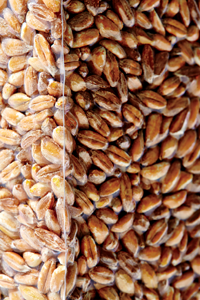
How to eat it
Farro is a versatile grain. It can be stirred into stews or serve as the base for a grainy salad with veggies and a simple vinaigrette.
Why it’s good for you
Farro is an ancient ancestor of wheat. The whole-grain variety requires overnight soaking and 30 to 40 minutes on the stovetop to yield a tender grain. Farro is lower in calories and higher in muscle-building protein and cancer-fighting fiber than other whole grains.
Nutrition
In addition to protein, it’s high in B vitamins and zinc.
 Fennel
Fennel

How to eat it
Try baking fennel bulbs with some garlic, salt, pepper, thyme, and maybe a little butter and cheese. You can serve it as a side dish or as a main course. It’s also nice thinly sliced into a green salad or stirred into a vegetable soup.
Why it’s good for you
Fennel is a vitamin cocktail, providing antioxidants, vitamin C, fiber and a unique mix of phytonutrients. One such phytonutrient is called anethole, which in animal studies has been shown to reduce inflammation and fend off chronic disease.
Nutrition
Compounds in fennel are thought to aid digestion.
 Figs
Figs
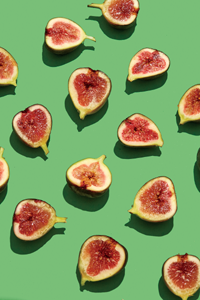
How to eat them
Pair figs with healthy appetizers like almonds for dinner-party guests. With some manchego and prosciutto, they also make a delicious sandwich topping. Of course, you can simply eat them whole too.
Why they’re good for you
These fruits are high in vitamins A and C, and they have a unique taste that works in both sweet and savory dishes. Avoid figs with bruises, as that makes them more likely to spoil. They should be a bit soft when you’re choosing which ones to bring home.
Nutrition
Each fig contains nearly a gram of fiber, which helps you feel satisfied when you eat.
 Flaxseeds
Flaxseeds
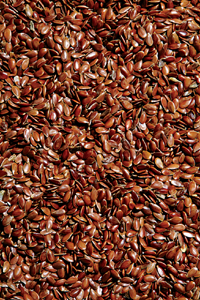
How to eat them
Flaxseeds are great on oatmeal, yogurt and granola, or baked into muffins or scones for some added nutrition. Just make sure you grind them right before you want to
use them.
Why they’re good for you
These tiny seeds have more than 100 times the amount of phytonutrients as oats, wheat bran, millet and buckwheat. Flaxseeds are a source of plant-based fatty acids, fiber, B vitamins, potassium, and minerals like calcium and iron, making them especially popular with vegetarians. Research suggests that flaxseed may help lower cholesterol, help fight cancer and lower the risk of osteoporosis.
Nutrition
The many nutrients in flaxseeds are much more available if you grind the seeds right before you eat them.
 Garlic
Garlic

How to eat it
This one is very simple: add garlic to everything. OK, maybe not everything, but when you’re cooking over a stove, there are very few instances when garlic ought to be off the table, particularly when you consider how good it is for you.
Why it’s good for you
This pungent little allium has serious health merits, packing both flavonoids and sulfur-containing nutrients that bolster immunity and support healthy joints. Garlic is well known for its cardioprotective benefits, and it’s also an effective antiviral.
Nutrition
According to some research, garlic-rich diets are associated with a lower risk of some cancers.
 Ghee
Ghee

How to eat it
Use it the same way you’d use butter, coconut oil or olive oil on the stove. It has a pleasant, slightly nutty flavor.
Why it’s good for you
Ghee is clarified butter, made by melting butter and skimming off some of the milk solids. It can be easier for some people to digest and is a staple of Indian cuisine. It’s high in vitamins and can be used as an alternative to cooking oils or butters.
Nutrition
It’s slightly lower in fat than butter, and the fat helps the body absorb some of the vitamins.
 Ginger Root
Ginger Root

How to eat it
If you’re worried about having to buy a whole root and using only a little bit, wrap it and store it in the freezer. Take it out and microplane it onto fish, chicken, salad dressings or anywhere you need a little zing. It’s tasty in smoothies too.
Why it’s good for you
This twisted root is widely considered a natural remedy for nausea and motion sickness and has been used in traditional medicine for thousands of years. It packs not only spicy flavor but also disease-fighting compounds.
Nutrition
Some research shows that compounds in ginger can help alleviate pain in people with osteoarthritis.
 Goat Cheese
Goat Cheese
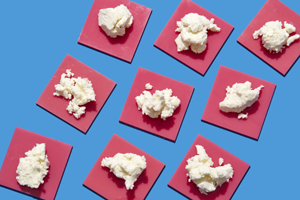
How to eat it
Even a small amount of goat cheese goes a long way. Add some crumbles to a roasted-beet side dish or to a sandwich with tomatoes.
Why it’s good for you
Goat cheese can feel indulgent, but it actually has less fat per serving than most other cheeses. It also contains protein, calcium and 3% of your daily dose of iron in just an ounce. (Some research has suggested that compared with cow milk, goat milk increases iron absorption and benefits your bones.) Still not convinced? Don’t forget that eating for pleasure is good for your health as well.
Nutrition
Just 1 ounce has up to 6 grams of protein.
 Grapefruit
Grapefruit

How to eat it
Slice a grapefruit in half, add just a pinch of sugar, and eat with a spoon for breakfast. Grapefruit also pairs well with sliced avocado. Add a little lemon juice or apple cider vinegar for extra flavor.
Why it’s good for you
The grapefruit may not be heralded as a “superfruit,” but it should be. Available in white, pink, yellow and red varieties, grapefruit is low in calories and loaded with nutrients, supporting weight loss, healthy skin, digestive balance, increased energy, and heart disease and cancer prevention.
Nutrition
It’s a low-calorie and low-sugar snack. Plus, since it contains fiber, it slows the spike from the natural sugars the fruit contains.
 Grass-Fed Beef
Grass-Fed Beef

How to eat it
Grass-fed beef is pricier than grain-fed, but all it needs is simple preparation—a grilled steak, for example—and you’ll have a healthier and cleaner-tasting cut.
Why it’s good for you
Grass-fed beef is lower in saturated fat than conventional beef and higher in “good fats” such as omega-3s, monounsaturated fatty acids and conjugated linoleic acid. It’s also a great source of protein and iron, which are important for growth and development.
Nutrition
A 3-ounce serving—less than half the size of a standard steak—packs 20 grams of protein.
 Greek Yogurt
Greek Yogurt

How to eat it
Yogurt has long been a go-to breakfast item for the health- (and taste-) conscious. Add some fruit, nuts or chia seeds for a little crunch.
Why it’s good for you
Conventional yogurt is an excellent source of calcium, potassium and protein, but the Greek varieties have up to double the protein, half the sodium and half the carbohydrates of regular yogurt. Probiotics such as Lactobacillus acidophilus and Lactobacillus casei are often added to yogurt, increasing healthy gut bacteria and bolstering immunity. While fat-free Greek yogurt has fewer calories than 1% Greek yogurt, the latter has the ability to make fat-soluble vitamins (such as A, D, E and K) more bioavailable.
Nutrition
You can get a third of the way toward your daily protein needs with a single serving of Greek yogurt.
 Harissa
Harissa

How to eat it
It’s super-versatile and can be dotted onto fried eggs, mixed into soups or stews or even mashed into potatoes.
Why it’s good for you
This spicy chili paste or powder is having a moment, and for good reason. Recipes for harissa can differ, but in general they usually contain a mixture of healthy ingredients like chili peppers, garlic, olive oil and spices. Chili peppers contain a compound called capsaicin, which is thought to have pain-relief and cancer-protective effects.
Nutrition
Like all spicy foods, harissa contains compounds that help fight inflammation and disease.
 Hemp Seeds
Hemp Seeds
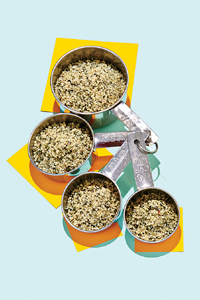
How to eat them
The seeds taste nutty and earthy and work well sprinkled into a peanut-butter-and-jelly sandwich or tossed into a quinoa salad or a bowl of Greek yogurt. (And no, hemp seeds won’t get you high.)
Why they’re good for you
A seed from the cannabis sativa plant, this food contains easily digestible protein and all nine essential amino acids, plus fatty acids, vitamin E and trace minerals.
Nutrition
They’re nutritious, but they’re also, like most seeds, high-calorie. A small amount goes a long way.
 Kale
Kale
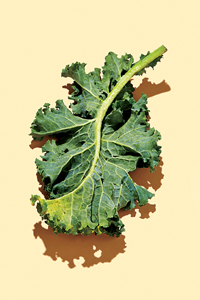
How to eat it
The secret to a kale salad that’s fresh but not too bitter is to give the kale a little massage. You can use a little olive oil, or simply water, to give the leaves a softer texture.
Why it’s good for you
Consider this dark green, leafy vegetable Mother Nature’s sunglasses: rich in the carotenoids lutein and zeaxanthin, kale delivers these pigments to the retinas, which absorb the sun’s damaging rays. Nutrients in kale have also been shown to lower cancer risk, support bone health and aid in natural detoxification.
Nutrition
Calorie for calorie, kale contains more iron than beef.
 Kamut
Kamut

How to eat it
For a hearty soup, cook up some kamut: let the grain sit in boiling water for about 30 minutes before adding it to a broth with vegetables and spices.
Why it’s good for you
Kamut is an ancient grain whose true origin isn’t clear. It looks like brown basmati rice, but it has a more buttery, nuttier and sweeter flavor. Kamut has 40% more protein than durum wheat, and it contains an array of polyphenols and vitamin E, selenium, magnesium, zinc, phosphorus and thiamin.
Nutrition
Just 1 cup contains nearly 10 grams of protein and 7 grams of fiber—which is exceptional.
 Kefir
Kefir

How to consume it
Add kefir to smoothies instead of milk or yogurt, or drink it plain.
Why it’s good for you
This is a cocktail of good-for-you probiotics. It’s been shown to support immunity, improve lactose intolerance (despite that sounding counterintuitive), build bone density and fight cavities by minimizing oral bacteria. As with other dairy products, kefir is rich in calcium, phosphorus, magnesium and protein.
Nutrition
It’s a low-sugar, high-calcium, probiotic-rich beverage that is excellent for digestion.
 Kimchi
Kimchi
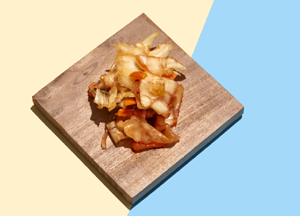
How to eat it
You can buy it or make it yourself. It tastes great by the spoonful, or you can add it to soups or stir-fries—or even pair it with fried eggs.
Why it’s good for you
Kimchi is the Korean version of fermented cabbage, and it is loaded with vitamin A, B vitamins and vitamin C. It adds a kick of flavor to almost any recipe.
Nutrition
Similar to sauerkraut, it contains healthy probiotics that regulate digestion.
 Kiwi
Kiwi
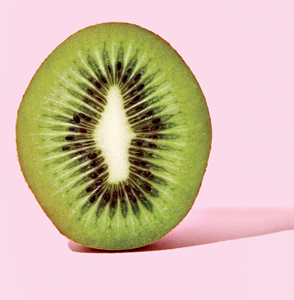
How to eat it
You may be surprised to learn that the fuzzy-looking skin on the kiwi is actually safe—and tasty—to eat. You can also chop up kiwi and mix it with other fruit like pineapples and pomegranates.
Why it’s good for you
Ounce for ounce, this fuzzy fruit—technically a berry—has more vitamin C than an orange. It also contains vitamin E and an array of polyphenols, which have a high amount of antioxidant protection. Fiber, potassium, magnesium and zinc—partly responsible for healthy hair, skin and nails—are also wrapped up in this nutritious fruit.
Nutrition
One small fruit has a full 2 grams of fiber.
 Kohlrabi
Kohlrabi

How to eat it
It tastes great roasted in olive oil or nestled under a roast chicken as it cooks.
Why it’s good for you
This peculiar-looking root vegetable has a pale green or purple bulb that sprouts multiple stalks with dark leaves—and you can eat all of it. Kohlrabi is a cousin to broccoli and cauliflower and is high in fiber and potassium.
Nutrition
Low-carb, high-fiber and full of nutrients, kohlrabi is a healthy powerhouse.












 Coconut Oil
Coconut Oil
 Coffee
Coffee
 Collard Greens
Collard Greens
 Corn
Corn
 Cumin
Cumin

 Eggplant
Eggplant

 Endive
Endive

 Fennel
Fennel
 Figs
Figs




 Goat Cheese
Goat Cheese
 Grapefruit
Grapefruit
 Grass-Fed Beef
Grass-Fed Beef

 Harissa
Harissa

 Kale
Kale
 Kamut
Kamut



 Kohlrabi
Kohlrabi